Back to: collum
Forward to: diplosegments
Haplosegments
The trunk of a millipede's body can be thought of as a thin-walled tube which is strengthened and thickened by tough plates embedded in the tube wall at regular intervals. |
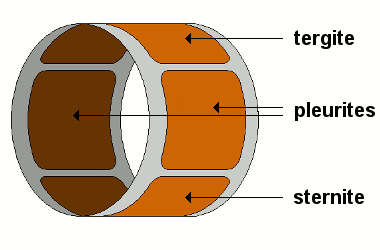 |
The four plates are fused together to form a single ring in each of the diplosegments in Polydesmida, but the situation is a little more complicated in the three haplosegments, as shown below. However, even when the plates are completely fused together, without a trace of a joining line, they are still named: the top part of the ring and the upper parts of the sides make up a tergite, the lower parts of the sides are pleurites and the bottom of the ring is a sternite.
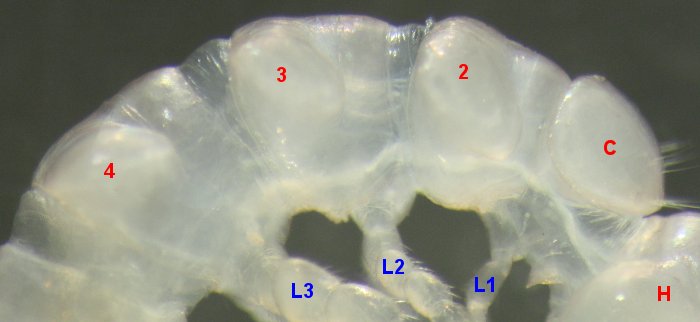
Male Lissodesmus perporosus (Dalodesmidae), Tasmania. This specimen has been treated with 80% lactic acid to dissolve away all soft tissue, and the gut has been removed. What remains (the exoskeleton) shows the trunk as a thin-walled tube with thickened sections corresponding to the body rings. See also the diplosegments page.
As shown in the images above and below, and going from back to front, ring 4 is 'normal': all plates are fused together and the legs (legpair 3) are attached to the sternite portion of the ring.
On ring 3, the sternite and its attached legs (legpair 2) are not fused with the rest of the ring. This is the ring on which the male and female sex organs open (see the legs and cyphopods pages), and in females the sternite and legs are recessed into the body cavity.
Ring 2 is complete but has no legs. Instead, legpair 1 is on a 'free-floating' sternite between ring 2 and the head.
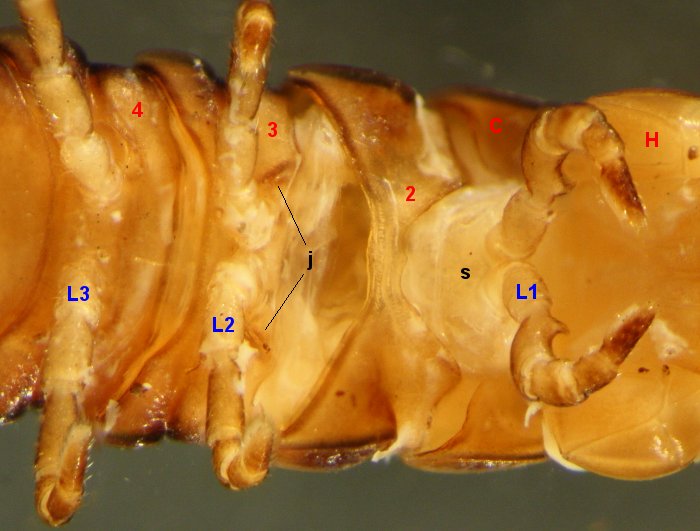
Male Somethus tasmani (Paradoxosomatidae), Tasmania.
s is the free sternite to which legpair 1 attaches.
j marks the joins between the upper part of ring 3 and the sternite to which legpair 2 attaches.
The haplosegment rings 2-4 are always shorter (on the long axis of the body) than the rest of the leg-bearing rings (see below). The haplosegments are also sometimes narrower (on the transverse axis of the body) than the rest of the leg-bearing rings, but that depends on the width of the paranota.
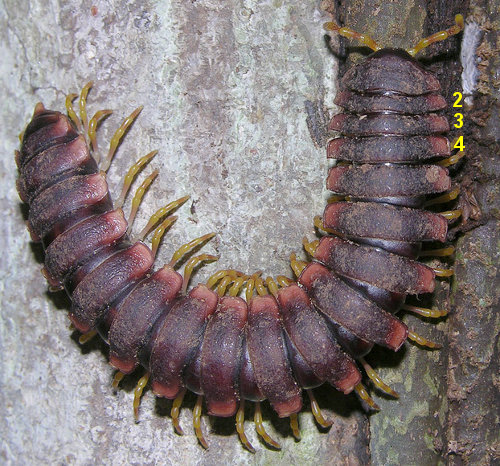
Unidentified polydesmidan, Barro Colorado Island, Panama
Image © 2007 by Arthur Anker; used with permission
In some Polydesmida there are swellings or projections in the lower part of the pleurite area of the haplosegments (see image below, left), and occasionally on the following diplosegments as well. These swellings or projections are called pleural keels.
A number of genera of H+19 Dalodesmidae in Australia and New Zealand have a large pit (p in the image below, right) ventrally on each side of ring 2 in adult males. The function of this pit is not known.
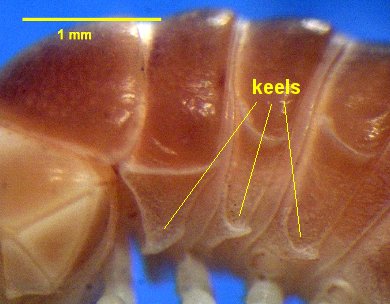 |
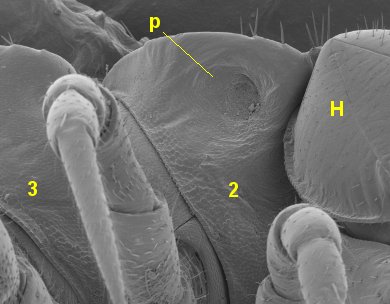 |
Aulacoporus castaneus (Paradoxosomatidae) |
Tasmaniosoma orientale (Dalodesmidae) |
Back to: collum
Forward to: diplosegments
